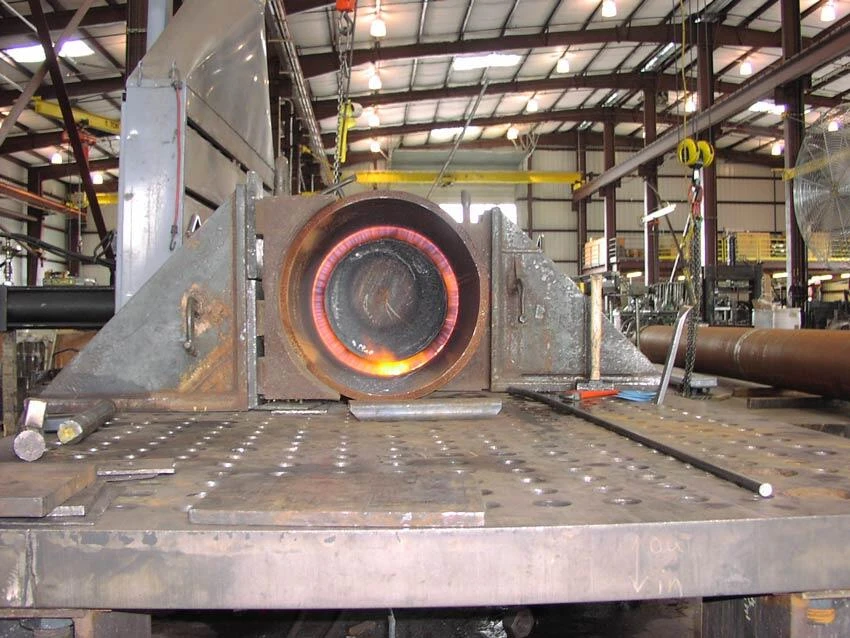The technique of bending a curve by increasing weight is called “hot bending.” The main advantage of hot bending steel, also known as heat-assisted bending, is that the object’s yield strength is lowered as opposed to its value at room temperature. As a consequence, less force has to be applied by the equipment that stretches heated closed-die forging products.
Using a furnace, an induction coil, or a flame, bending pressure is applied to the member after the application of heat. Although the element may be steel, copper or aluminium and could be bent into specific shapes, the bending techniques outlined in the preceding section usually deliver the deformation. The HSS parts may be heated either internally or externally. Heat is typically only used as a gag press to bend beams when the pressure of the shaft is greater than the device’s capacity. Stainless steel is one of the many materials used for hot bending steel.
Depending on how and what you use it for, you can also have the option of custom stainless steel fabrication. Other materials you may be familiar with are carbon, steel, and copper. If you want to learn all about hot bending steel, here is an overall summary of all the things you should know.
Learn More About Hot Bending Steel
Pipe bending may be done highly efficiently and precisely using induction turning. Local heating is carried out during the induced bending process using high-frequency electrical power. In addition to pipes and tubes, a piece of hot bending steel equipment can sometimes bend structural shapes like channels and W&H sections.
Other names for induction-based metal bending include “hot bending,” “incremental bending,” and “high-frequency bending.” Induction bending is the best choice when dealing with bigger pipe diameters or when the availability of cold bending techniques is limited. An induction coil is placed all over the pipe to be twisted, and it is heated to between 850 and 1100 degrees Celsius since it is the product of hot closed die forging.
8 Benefits of Hot Bending Steel
Hot Bending Steel is useful and can be seen everywhere in our daily lives if we look closely. Here are the 8 main benefits of hot bending steel:
- Explicit materials could be produced significantly more rapidly than additional features since they are substantially cheaper than standard components (like elbows).
- Elbows may often be replaced with induction bends with a broader radius, which lowers friction, wear, and pump capacity.
- The amount of welds in the system is reduced via induction bending.
- At the crucial points on the tangents, there are no welds.
- Price reductions come from using less nondestructive testing.
- A bend with induction is more potent than an elbow with a homogeneous wall thickness.
- There may be a significant reduction in the number of elbow bends and conventional bends.
- Since straight pipes are more accessible than elbows, product development is significantly quicker.
The Hot Bending Procedure
The hot bending procedure offers higher component strength, a more precise shape, and thickness preservation. In order to hot bend pipes or pipeline systems, the following procedures are used:
- The clamps on the machine bed maintain the pipe’s position while it is being hydraulically bent.
- The whole pipe is encircled by induction-powered heating and cooling coils. A more consistent heating result is obtained by dividing the induction coil into three different planes.
- The radius of the bend may be changed by adjusting the front clamp and radius arm. A single pointer may show the precise degree of rotation.
- There are length indications for the arc on the pipe. A line may move gradually while being bent using a set of arms with a predetermined radius.
- The hydraulic pressure, water volume, and switch settings are checked before the induction bending process starts.
- The pipe progressively moves between 10 and 40 millimetres per minute (mm/min) after it has reached the proper temperature range. The process is finished when the desired bend angle and the predetermined arc length are attained.
- Water is sprayed onto the pipe’s outer surface to cool the heated pipe material outside the induction coil.
- The induction bend result is then obtained, examined, and its tolerance assessed.
- Applying post-bend thermal treatments to induction bends is the last phase of the procedure. These treatments have a variety of uses, including stress release and normalisation.
Application For Hot Bending Steel
Hot bending steel provides fundamentally good support and repairs for a set of features and is considered the most popular bending technique in sectors like:
- Original Equipment Manufacturer
- Agriculture
- Mining
- Transportation
- Plumbing
- Construction & More!
Conclusion
Hot bending steel can be utilised and applied in many functions and repairs, such as for industrial, home use, and many more. It is an innovation that benefits the majority of our daily lives. Items in our households, workplace, schools, and more have been subjected to hot bending of steel. So, if you own a business that requires the assistance of hot bending steel, read on for more information!


